Global Exponential Synchronization of Delayed Quaternion-Valued Neural Networks via Decomposition and Non-Decomposition Methods and Its Application to Image Encryption
Abstract
1. Introduction
2. Problem Formulation and Preliminaries
2.1. Notations
2.2. Quaternion Algebra
2.3. Problem Formulation
3. Main Results
3.1. Decomposition-Method-Based Synchronization Analysis
3.2. Preliminaries
- (1)
- ,
- (2)
- ,
- (3)
- , .
3.3. Non-Decomposition-Method-Based Synchronization Analysis
4. Numerical Examples
5. Application to Image Encryption
5.1. Background on the Color Image
5.2. Permutation Procedure
- We can rearrange the rows of by multiplying a permutation square matrix to the left of (i.e., ). Similarly, we can rearrange the columns of by multiplying a permutation square matrix to the right of (i.e., ).
- The inverse of a permutation matrix is simply its transpose (i.e., ).
- One can obtain .
- For given initial values and , iterate the LLM (52) to obtain .
- Consider . Obviously, we have .
- Perform the iteration LLM (52) until there are unique and different values located from 1 to . Then, arrange these unique and different values in an orderly manner to be stored in , .
- For each , we have , , . After replaying the th row of the identity matrix on the th row of the row permutation matrix , we obtain the row permutation matrix . Similarly, the column permutation matrix is obtained.
5.3. QVNN-Based Encryption Algorithm
- S1:
- Separate the channels of shuffled image into three gray ones with red, green, and blue. Hence, three new pixel matrices are obtained as , and , in which and .
- S2:
- Arrange the pixels of each , and in the order from left to right and then top to down to obtain .
- S3:
- To obtain the chaotic sequences, the master QVNN (48) is iterated continuously times with a step size of 0.001. Then, after a certain transformation, the chaotic signals can be obtained as shown in Algorithm 1. In Algorithm 1, the symbol denotes the flooring operation, whereas mod denotes the modulo operation.
- S4:
- The ciphertext can be obtained by the following operation, i.e., , where and ⊕ corresponds to the XOR operator. Then, the decryption scheme is identical to the discussed encryption scheme in reverse order, which is neglected.
| Algorithm 1: Reorganizing Chaotic Sequences. |
| Require: |
| 1. ; |
| Ensure: |
| 2. for do 1 to |
| 3. ; |
| 4. ; |
| 5. ; |
| 6. end |
5.4. Simulation Results
5.5. Performance Analysis
5.6. Key Space Analysis
5.7. Key Sensitivity Analysis
5.7.1. Histograms Analysis
5.7.2. Correlation Coefficient Analysis
5.7.3. Information Entropy Analysis
5.8. Differential Attack Analysis
5.9. Efficient Analysis
6. Conclusions
Author Contributions
Funding
Data Availability Statement
Acknowledgments
Conflicts of Interest
References
- Jayawardana, R.; Bandaranayake, T.S. Analysis of optimizing neural networks and artificial intelligent models for guidance, control, and navigation systems. Int. Res. J. Mod. Eng. Technol. Sci. 2021, 3, 743–759. [Google Scholar]
- Yu, Z.; Abdulghani, A.M.; Zahid, A.; Heidari, H.; Imran, M.A.; Abbasi, Q.H. An overview of neuromorphic computing for artificial intelligence enabled hardware-based hopfield neural network. IEEE Access 2020, 8, 67085–67099. [Google Scholar] [CrossRef]
- Liao, T.L.; Wang, F.C. Global stability for cellular neural networks with time delay. IEEE Trans. Neural Netw. 2000, 11, 1481–1484. [Google Scholar] [PubMed]
- Zhang, Z.; Quan, Z. Global exponential stability via inequality technique for inertial BAM neural networks with time delays. Neurocomputing 2015, 151, 1316–1326. [Google Scholar] [CrossRef]
- Huang, H.; Cao, J.; Wang, J. Global exponential stability and periodic solutions of recurrent neural networks with delays. Phys. Lett. A 2002, 298, 393–404. [Google Scholar] [CrossRef]
- Cai, Z.; Huang, L. Existence and global asymptotic stability of periodic solution for discrete and distributed time-varying delayed neural networks with discontinuous activations. Neurocomputing 2011, 74, 3170–3179. [Google Scholar] [CrossRef]
- Guo, R.; Zhang, Z.; Liu, X.; Lin, C. Existence, uniqueness, and exponential stability analysis for complex-valued memristor-based BAM neural networks with time delays. Appl. Math. Comput. 2017, 311, 100–117. [Google Scholar] [CrossRef]
- Yuan, Y.; Song, Q.; Liu, Y.; Alsaadi, F.E. Synchronization of complex-valued neural networks with mixed two additive time-varying delays. Neurocomputing 2019, 332, 149–158. [Google Scholar] [CrossRef]
- Zhou, B.; Song, Q. Stability and Hopf bifurcation analysis of a tri-neuron BAM neural network with distributed delay. Neurocomputing 2012, 82, 69–83. [Google Scholar] [CrossRef]
- Hirose, A. Nature of complex number and complex-valued neural networks. Front. Inf. Technol. Electron. Eng. 2011, 6, 171–180. [Google Scholar] [CrossRef]
- Nitta, T. Orthogonality of decision boundaries in complex-valued neural networks. Neural Comput. 2004, 16, 73–97. [Google Scholar] [CrossRef] [PubMed]
- Lee, D.L. Relaxation of the stability condition of the complex-valued neural networks. IEEE Trans. Neural Netw. 2001, 12, 1260–1262. [Google Scholar] [PubMed]
- Zhang, F. Quaternions and matrices of quaternions. Linear Algebra Appl. 1997, 251, 21–57. [Google Scholar] [CrossRef]
- Liu, Y.; Zheng, Y.; Lu, J.; Cao, J.; Rutkowski, L. Constrained quaternion-variable convex optimization: A quaternion-valued recurrent neural network approach. IEEE Trans. Neural Netw. Learn. Syst. 2019, 31, 1022–1035. [Google Scholar] [CrossRef]
- Liu, L.; Lei, M.; Bao, H. Event-triggered quantized quasisynchronization of uncertain quaternion-valued chaotic neural networks with time-varying delay for image encryption. IEEE Trans. Cybern. 2022, 53, 3325–3336. [Google Scholar] [CrossRef]
- Song, Q.; Long, L.; Zhao, Z.; Liu, Y.; Alsaadi, F.E. Stability criteria of quaternion-valued neutral-type delayed neural networks. Neurocomputing 2020, 412, 287–294. [Google Scholar] [CrossRef]
- Xu, X.; Xu, Q.; Yang, J.; Xue, H.; Xu, Y. Further research on exponential stability for quaternion-valued neural networks with mixed delays. Neurocomputing 2020, 400, 186–205. [Google Scholar] [CrossRef]
- Duan, H.; Peng, T.; Tu, Z.; Qiu, J.; Lu, J. Globally exponential stability and globally power stability of quaternion-valued neural networks with discrete and distributed delays. IEEE Access 2020, 8, 46837–46850. [Google Scholar] [CrossRef]
- Meng, X.; Li, Y. Pseudo almost periodic solutions for quaternion-valued cellular neural networks with discrete and distributed delays. J. Inequal. Appl. 2018, 2018, 245. [Google Scholar] [CrossRef]
- Lin, D.; Zhang, Q.; Chen, X.; Li, Z.; Wang, S. A color image encryption using one quaternion-valued neural network. SSRN Electron J. 2022, 4, 1–29. [Google Scholar] [CrossRef]
- Tu, Z.; Zhao, Y.; Ding, N.; Feng, Y.; Zhang, W. Stability analysis of quaternion-valued neural networks with both discrete and distributed delays. Appl. Math. Comput. 2019, 343, 342–353. [Google Scholar] [CrossRef]
- Pecora, L.M.; Carroll, T.L. Synchronization in chaotic systems. Phys. Rev. Lett. 1990, 64, 821. [Google Scholar] [CrossRef]
- Alsaedi, A.; Cao, J.; Ahmad, B.; Alshehri, A.; Tan, X. Synchronization of master-slave memristive neural networks via fuzzy output-based adaptive strategy. Chaos Solitons Fractals 2022, 158, 112095. [Google Scholar] [CrossRef]
- Xu, D.; Wang, T.; Liu, M. Finite-time synchronization of fuzzy cellular neural networks with stochastic perturbations and mixed delays. Circuits Syst. Signal Process. 2021, 40, 3244–3265. [Google Scholar] [CrossRef]
- Peng, T.; Zhong, J.; Tu, Z.; Lu, J.; Lou, J. Finite-time synchronization of quaternion-valued neural networks with delays: A switching control method without decomposition. Neural Netw. 2022, 148, 37–47. [Google Scholar] [CrossRef] [PubMed]
- Samidurai, R.; Sriraman, R. Non-fragile sampled-data stabilization analysis for linear systems with probabilistic time-varying delays. J. Frank. Inst. 2019, 356, 4335–4357. [Google Scholar] [CrossRef]
- Samidurai, R.; Sriraman, R.; Zhu, S. Stability and dissipativity analysis for uncertain Markovian jump systems with random delays via new approach. Int. J. Syst. Sci. 2019, 50, 1609–1625. [Google Scholar] [CrossRef]
- Sriraman, R.; Cao, Y.; Samidurai, R. Global asymptotic stability of stochastic complex-valued neural networks with probabilistic time-varying delays. Math. Comput. Simul. 2020, 171, 103–118. [Google Scholar] [CrossRef]
- He, W.; Cao, J. Exponential synchronization of chaotic neural networks: A matrix measure approach. Nonlinear Dyn. 2009, 55, 55–65. [Google Scholar] [CrossRef]
- Li, Y.; Li, C. Matrix measure strategies for stabilization and synchronization of delayed BAM neural networks. Nonlinear Dyn. 2016, 84, 1759–1770. [Google Scholar] [CrossRef]
- Gong, W.; Liang, J.; Cao, J. Matrix measure method for global exponential stability of complex-valued recurrent neural networks with time-varying delays. Neural Netw. 2015, 70, 81–89. [Google Scholar] [CrossRef]
- Tang, Q.; Jian, J. Matrix measure based exponential stabilization for complex-valued inertial neural networks with time-varying delays using impulsive control. Neurocomputing 2018, 273, 251–259. [Google Scholar] [CrossRef]
- Xie, D.; Jiang, Y.; Han, M. Global exponential synchronization of complex-valued neural networks with time delays via matrix measure method. Neural Process. Lett. 2019, 49, 187–201. [Google Scholar] [CrossRef]
- Kocak, O.; Erkan, U.; Toktas, A.; Gao, S. PSO-based image encryption scheme using modular integrated logistic exponential map. Expert Syst. Appl. 2024, 237, 121452. [Google Scholar] [CrossRef]
- Toktas, F.; Erkan, U.; Yetgin, Z. Cross-channel color image encryption through 2D hyperchaotic hybrid map of optimization test functions. Expert Syst. Appl. 2024, 249, 123583. [Google Scholar] [CrossRef]
- Feng, W.; Wang, Q.; Liu, H.; Ren, Y.; Zhang, J.; Zhang, S.; Wen, H. Exploiting newly designed fractional-order 3D Lorenz chaotic system and 2D discrete polynomial hyper-chaotic map for high-performance multi-image encryption. Fractal Fract. 2023, 7, 887. [Google Scholar] [CrossRef]
- Feng, W.; Zhao, X.; Zhang, J.; Qin, Z.; Zhang, J.; He, Y. Image encryption algorithm based on plane-level image filtering and discrete logarithmic transform. Mathematics 2022, 10, 2751. [Google Scholar] [CrossRef]
- Wen, H.; Lin, Y. Cryptanalysis of an image encryption algorithm using quantum chaotic map and DNA coding. Expert Syst. Appl. 2024, 237, 121514. [Google Scholar] [CrossRef]
- Wen, H.; Lin, Y. Cryptanalyzing an image cipher using multiple chaos and DNA operations. J. King Saud Univ.-Comput. Inf. Sci. 2023, 35, 101612. [Google Scholar] [CrossRef]
- Feng, W.; Zhang, J. Cryptanalzing a novel hyper-chaotic image encryption scheme based on pixel-level filtering and DNA-level diffusion. IEEE Access 2020, 8, 209471–209482. [Google Scholar] [CrossRef]
- Vidyasagar, M. Nonlinear Systems Analysis; Prentice-Hall: Englewood Cliffs, NJ, USA, 1993. [Google Scholar]
- Chen, M. Chaos synchronization in complex networks. IEEE Trans. Circuits Syst. I Regul. Pap. 2008, 55, 1335–1346. [Google Scholar] [CrossRef]
- Cheng, C.J.; Liao, T.L.; Hwang, C.C. Exponential synchronization of a class of chaotic neural networks. Chaos Solitons Fractals 2005, 24, 197–206. [Google Scholar] [CrossRef]
- Chen, X.; Song, Q.; Li, Z. Design and analysis of quaternion-valued neural networks for associative memories. IEEE Trans. Syst. Man Cybern. 2017, 48, 2305–2314. [Google Scholar] [CrossRef]
- Zhang, Y.; Yang, L.; Kou, K.I.; Liu, Y. Synchronization of fractional-order quaternion-valued neural networks with image encryption via event-triggered impulsive control. Knowl.-Based Syst. 2024, 296, 111953. [Google Scholar] [CrossRef]
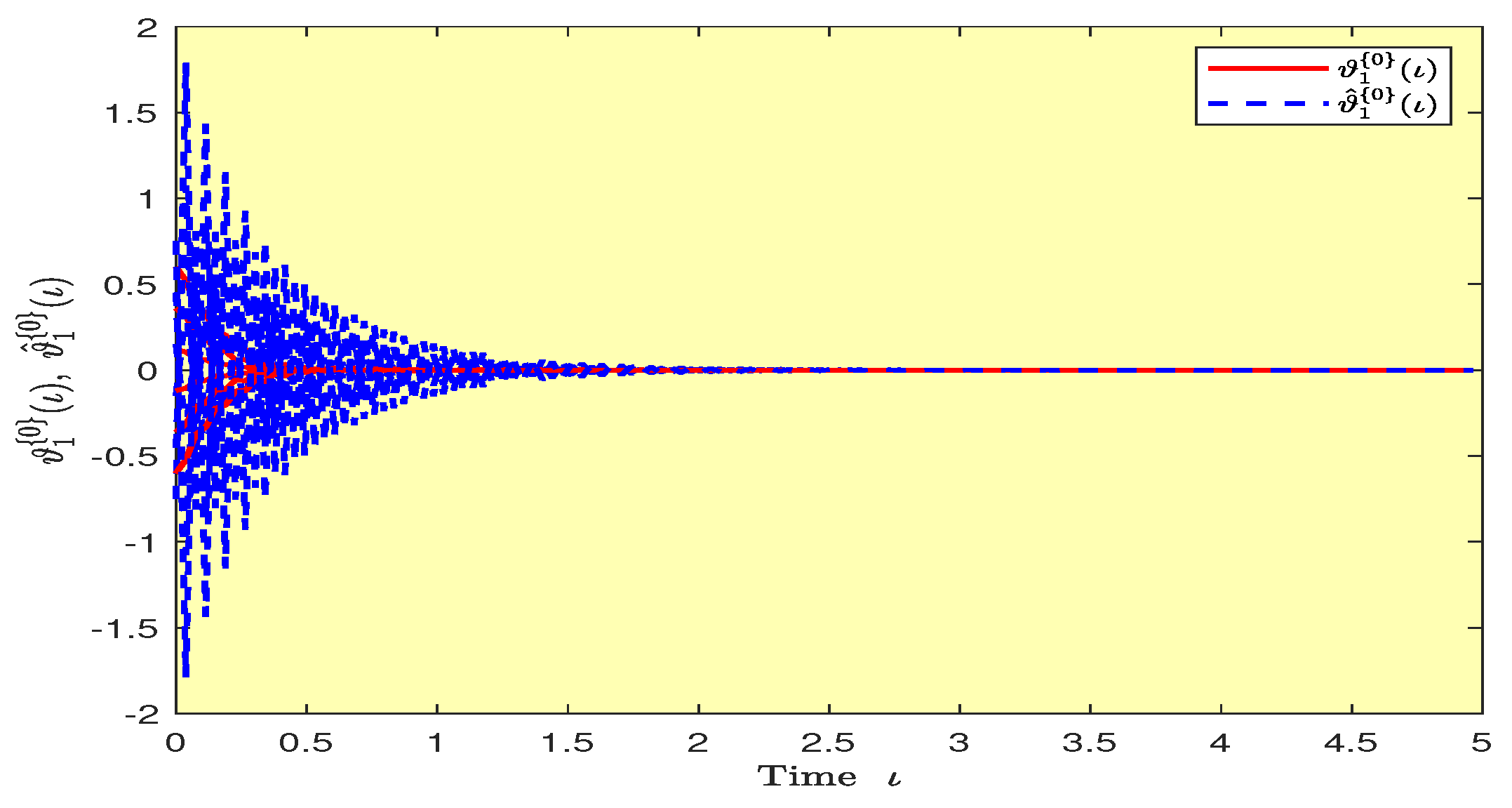


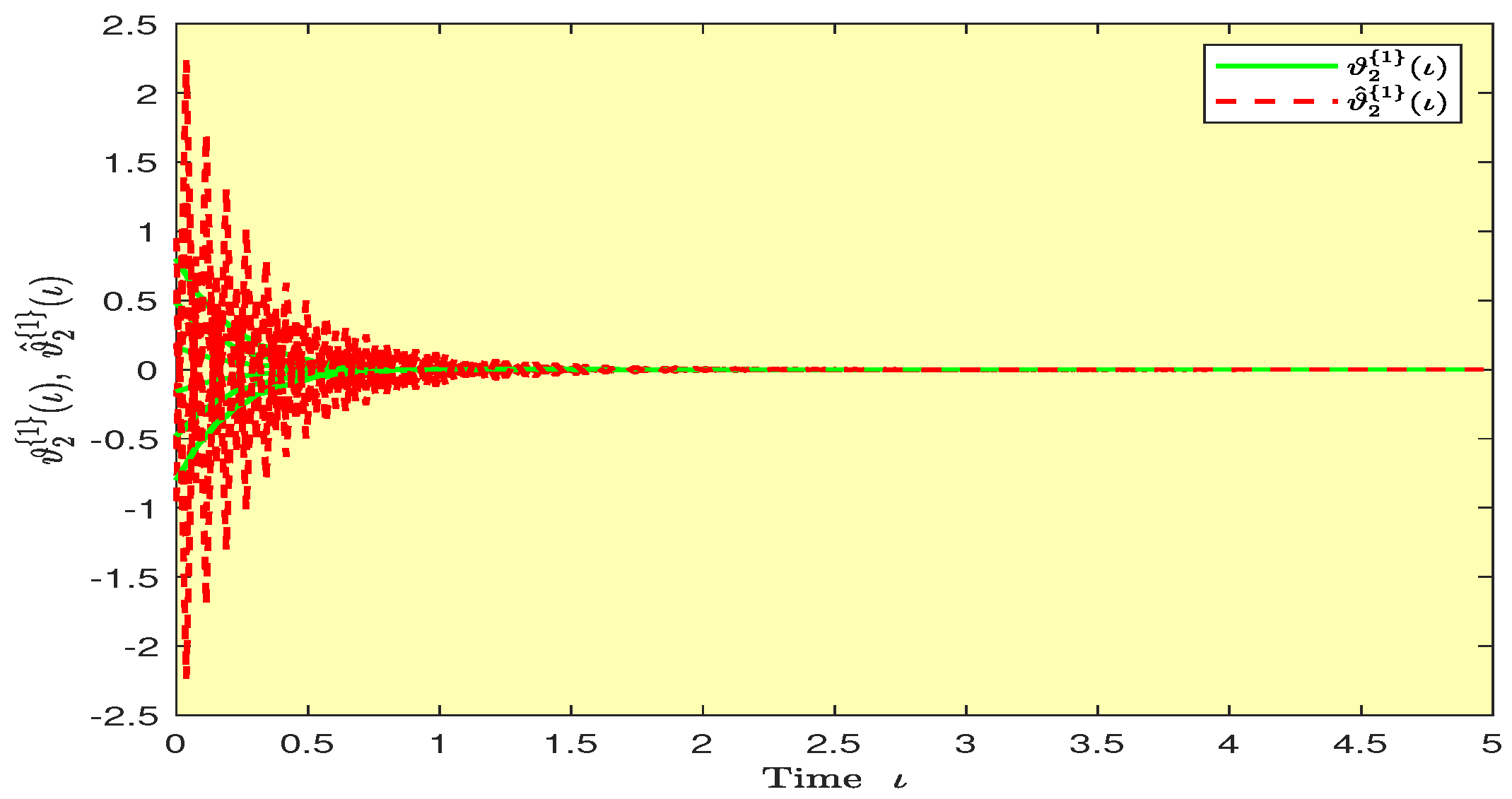
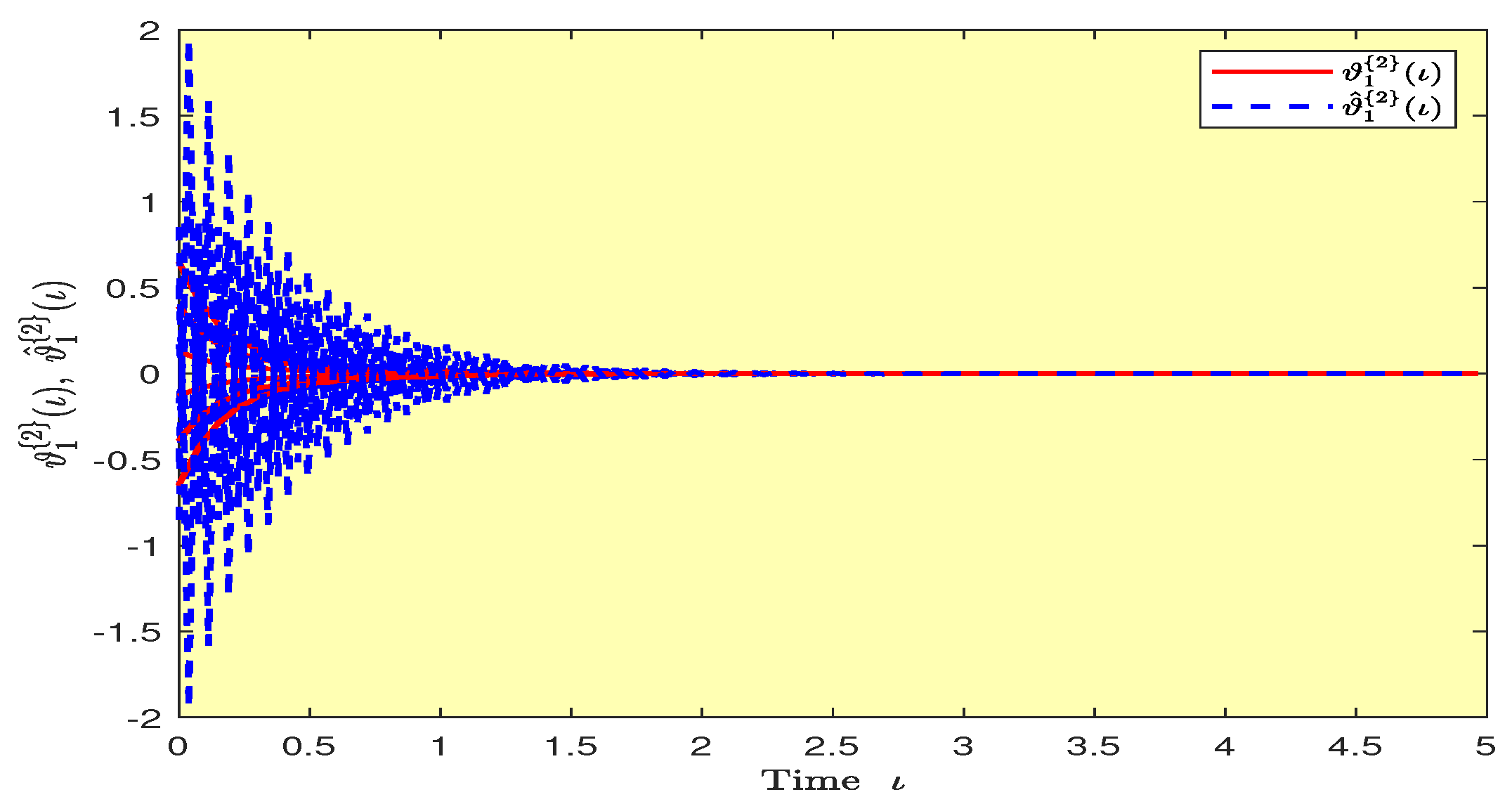
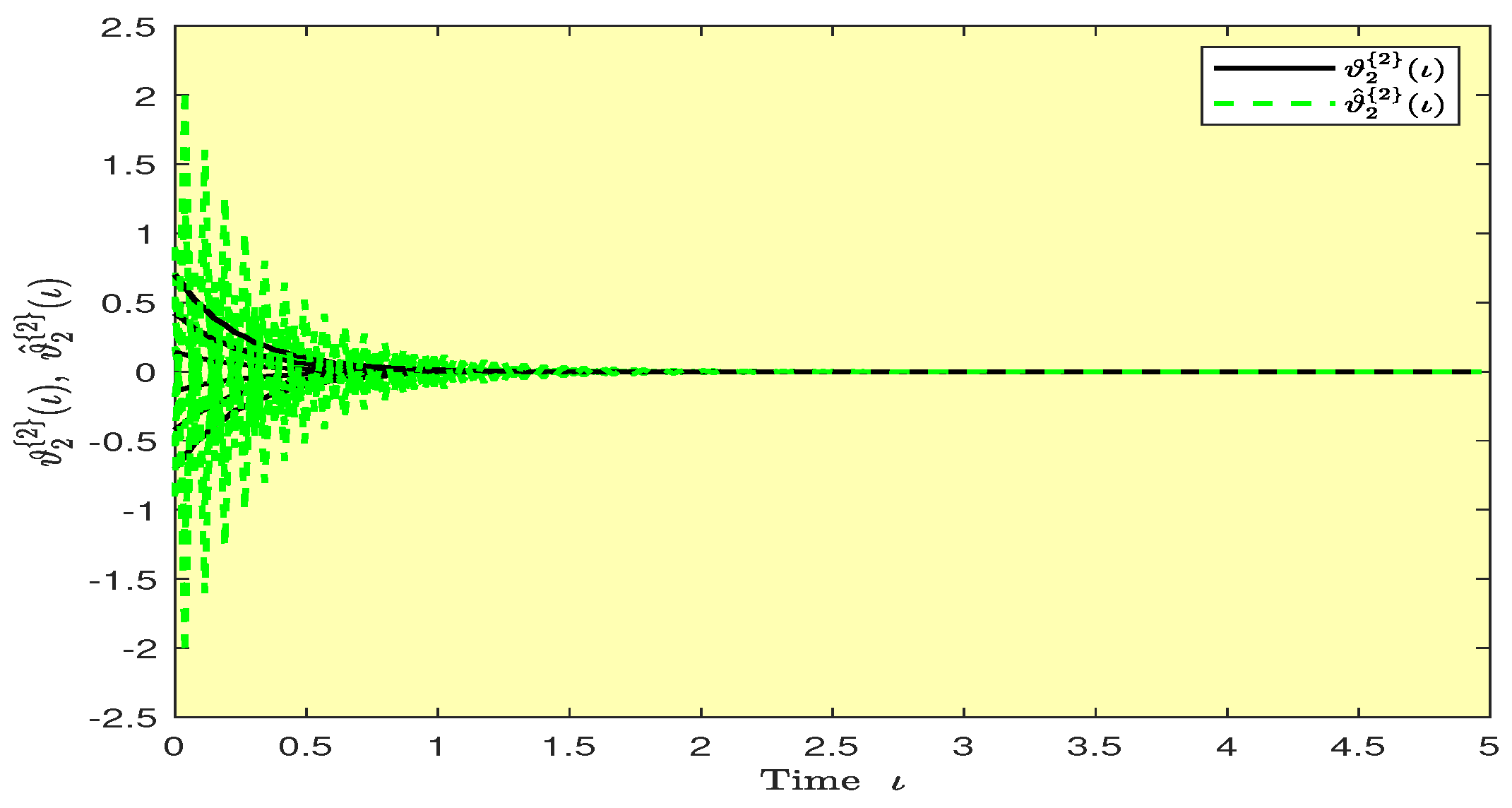
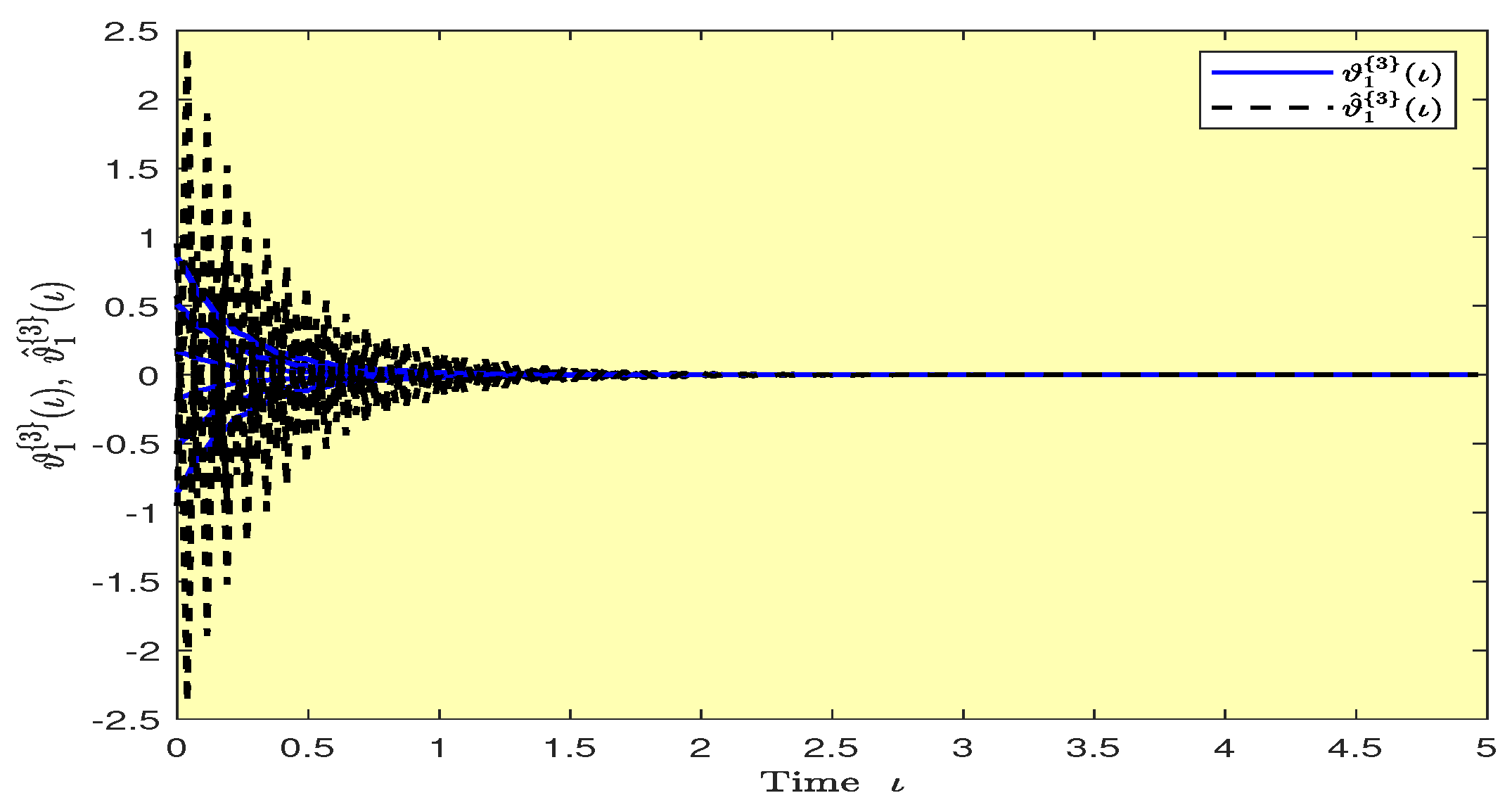
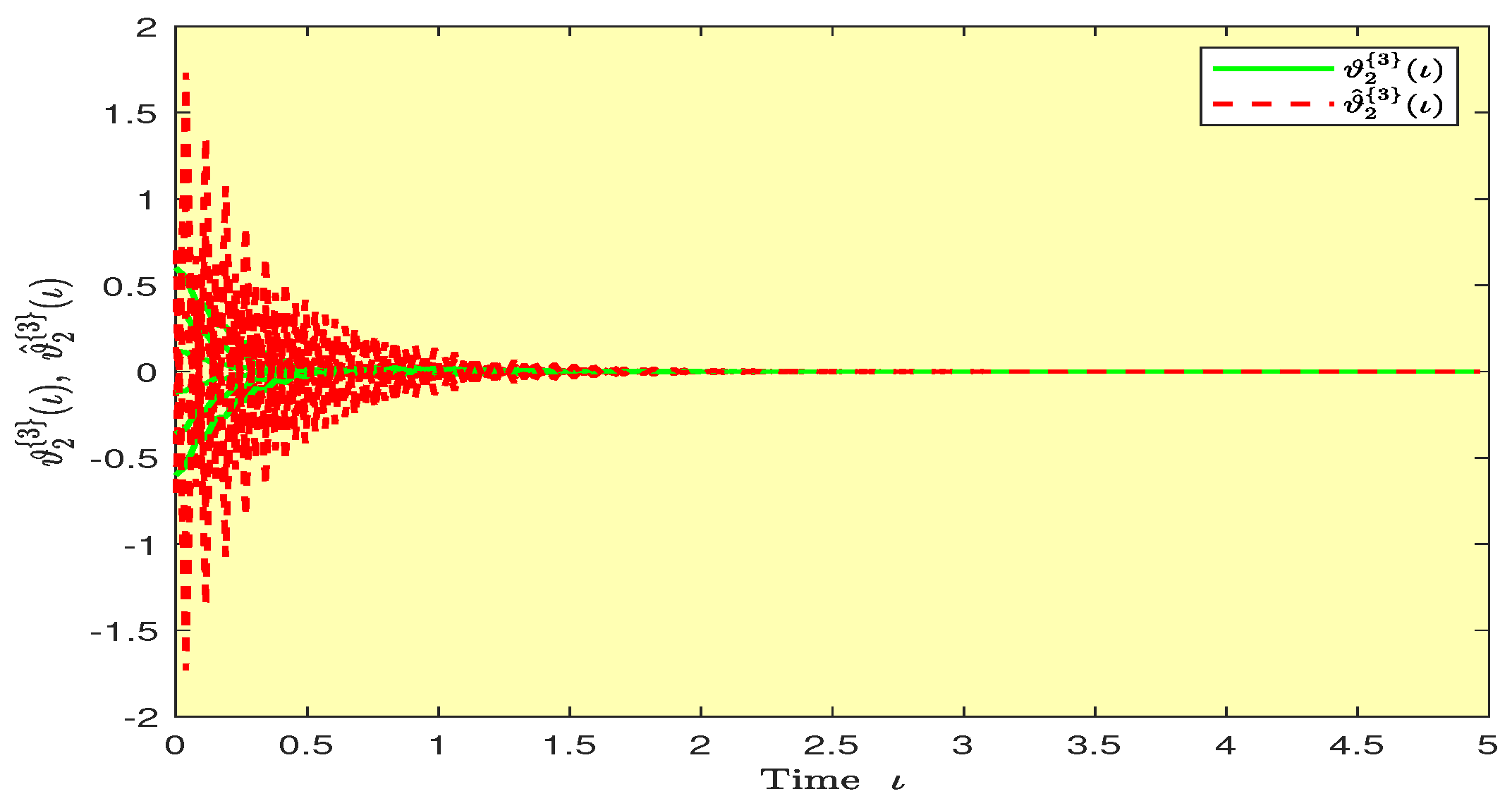

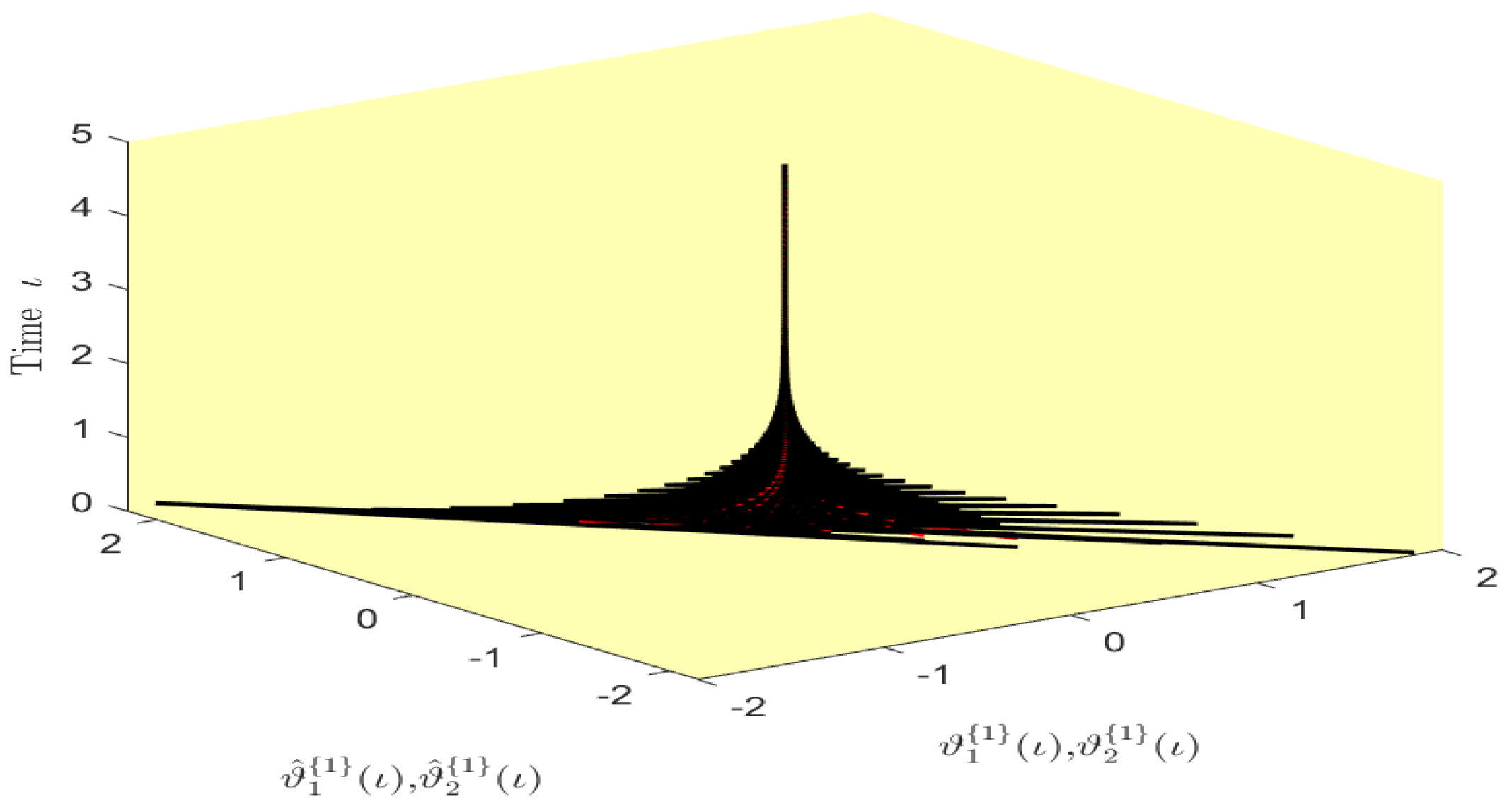

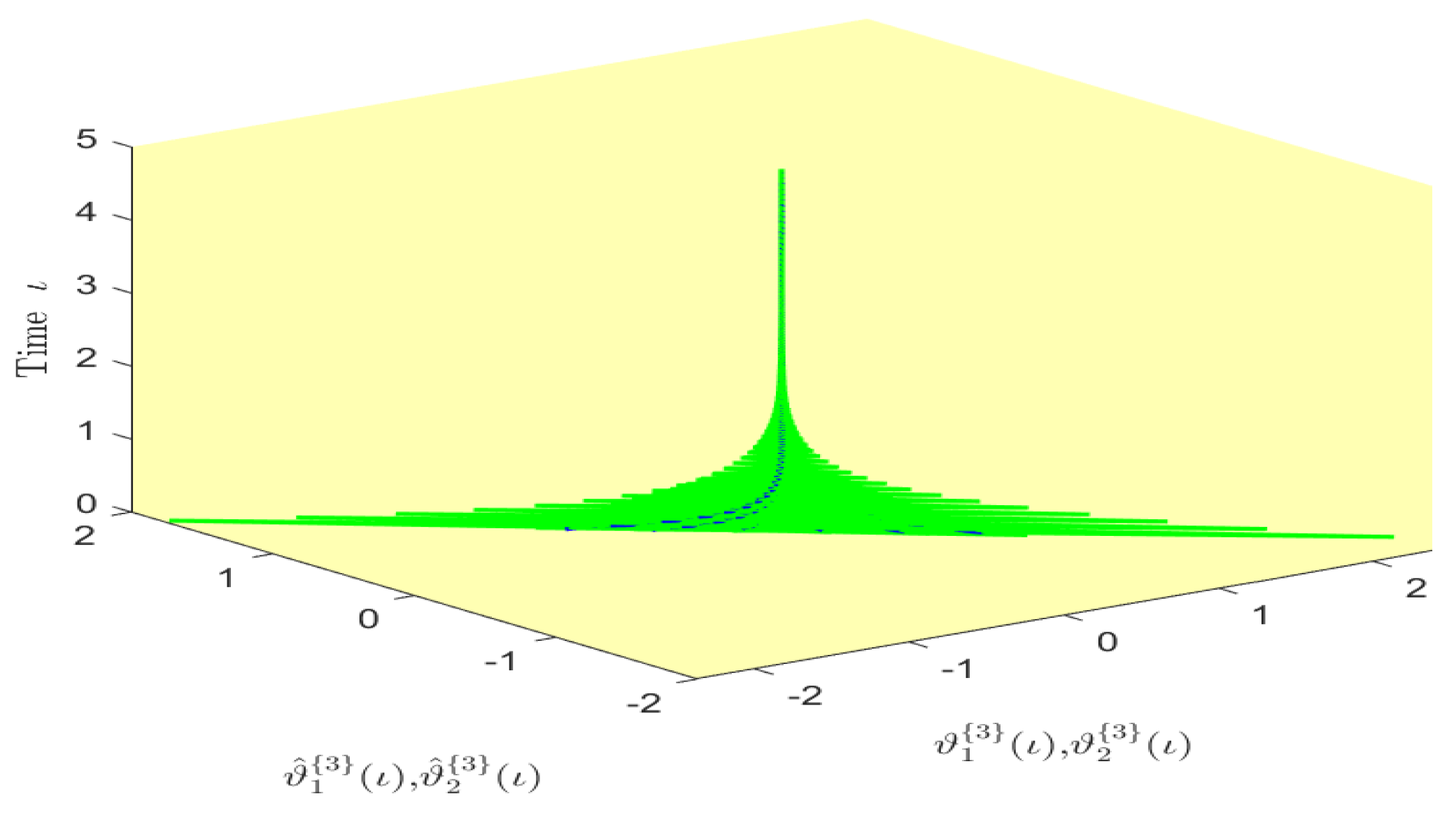
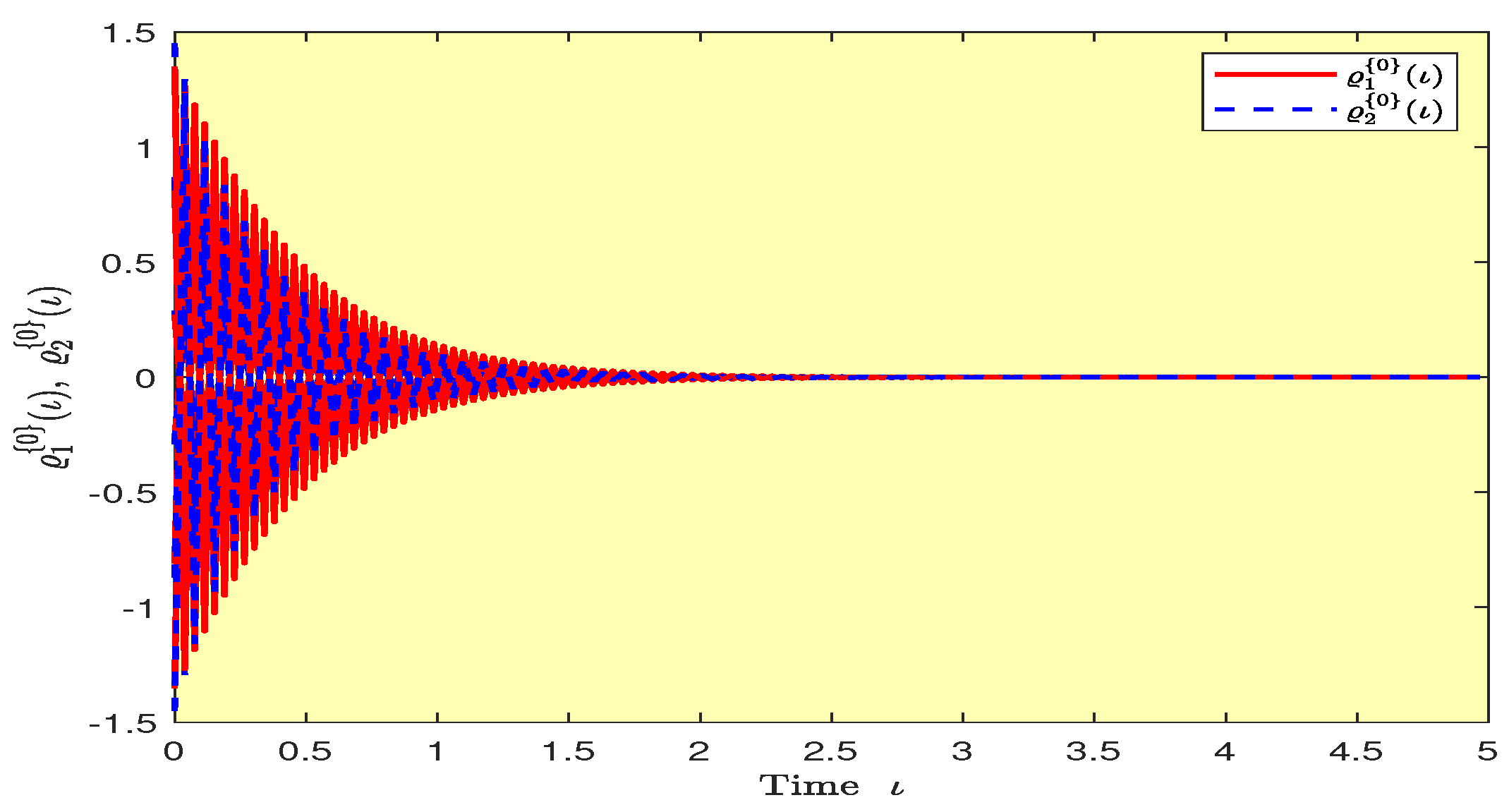
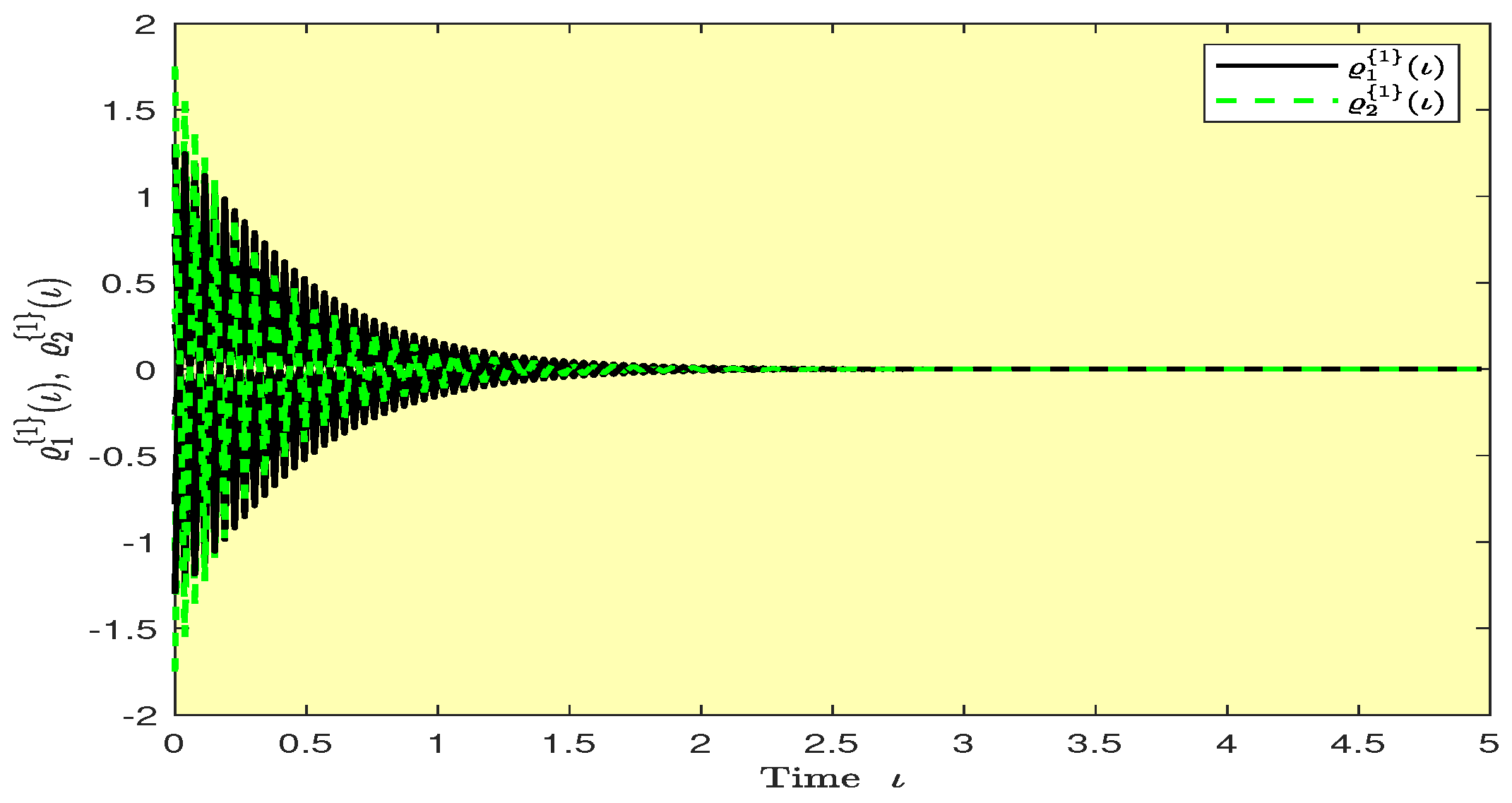

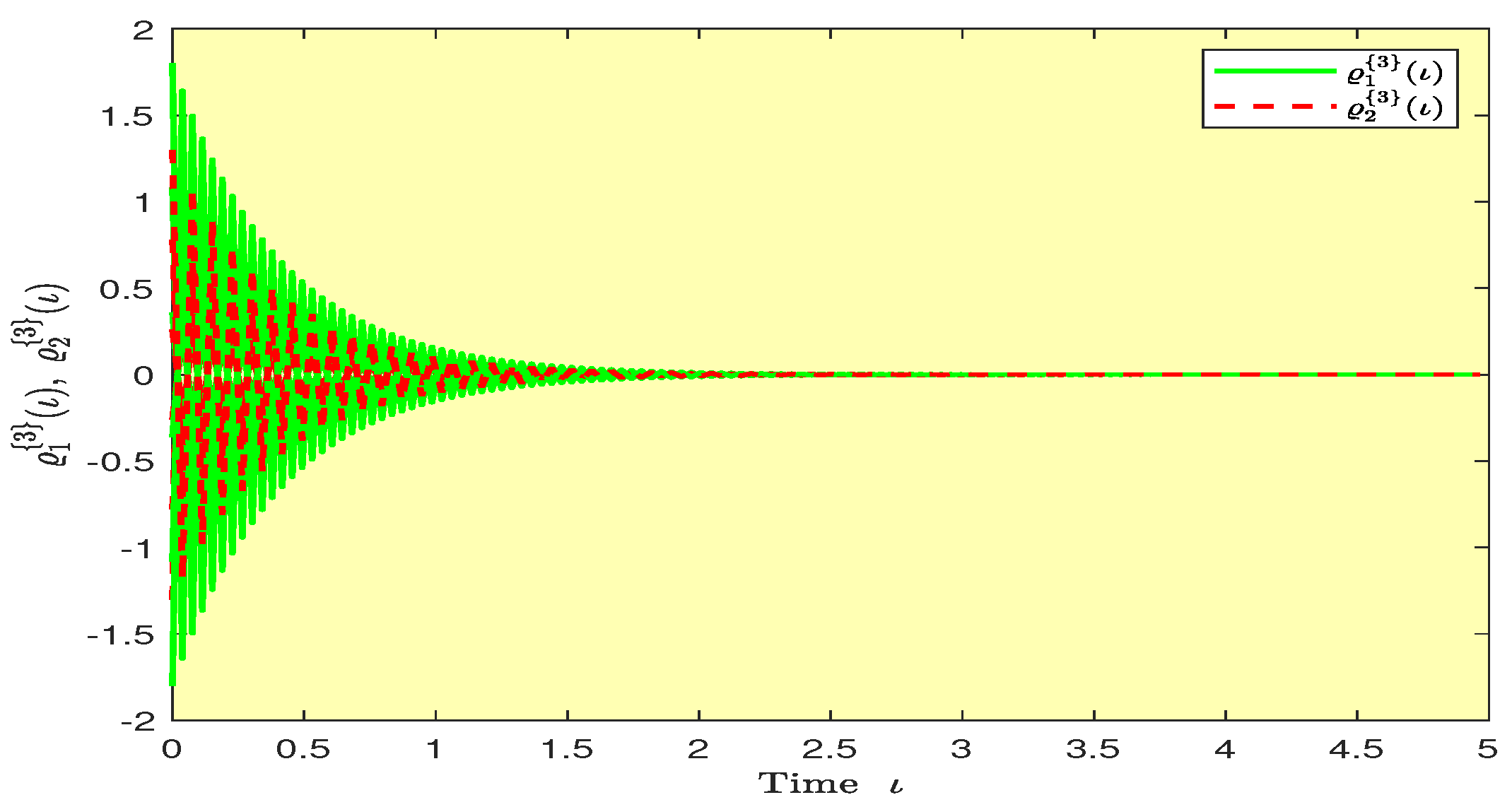

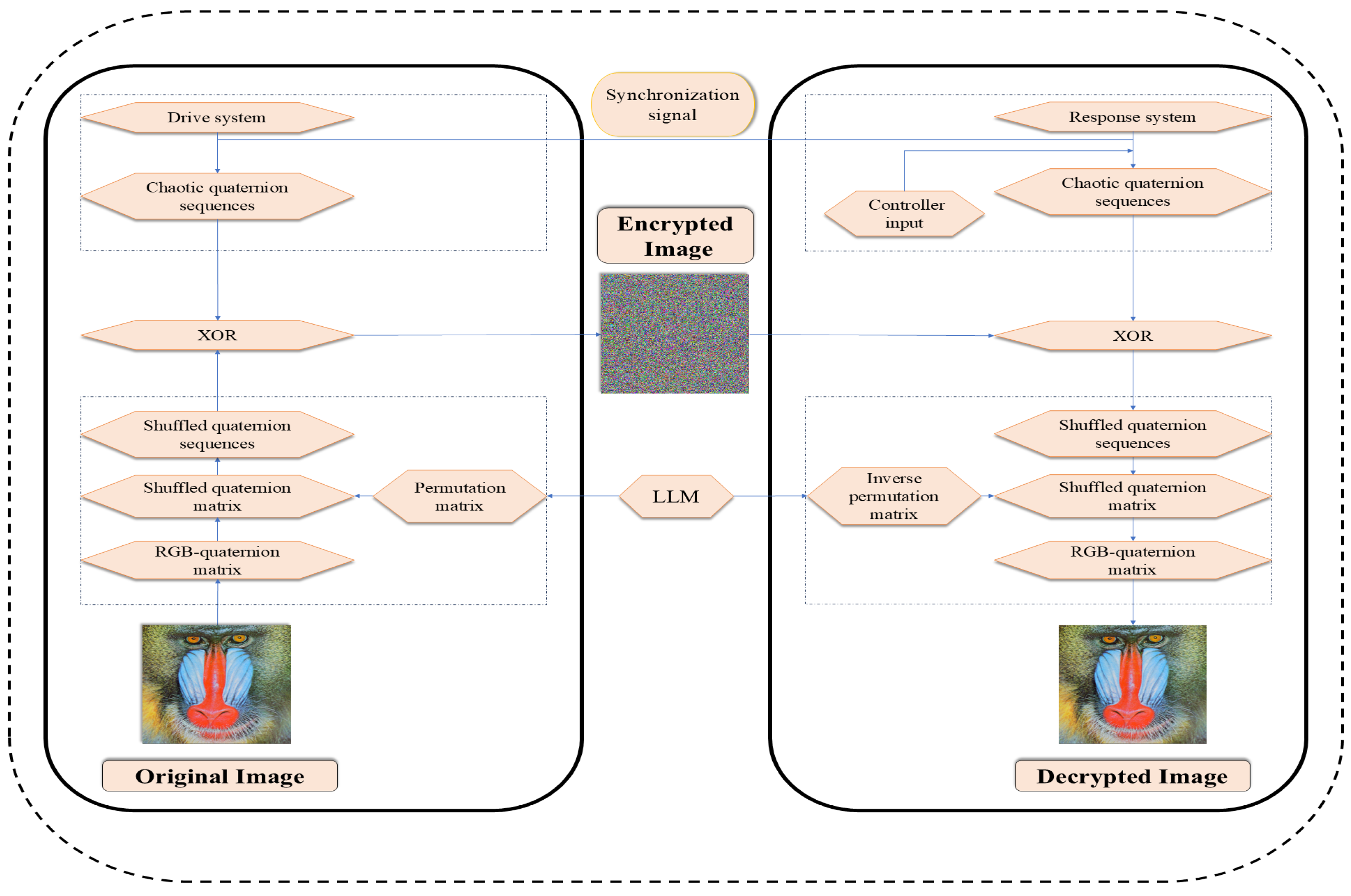
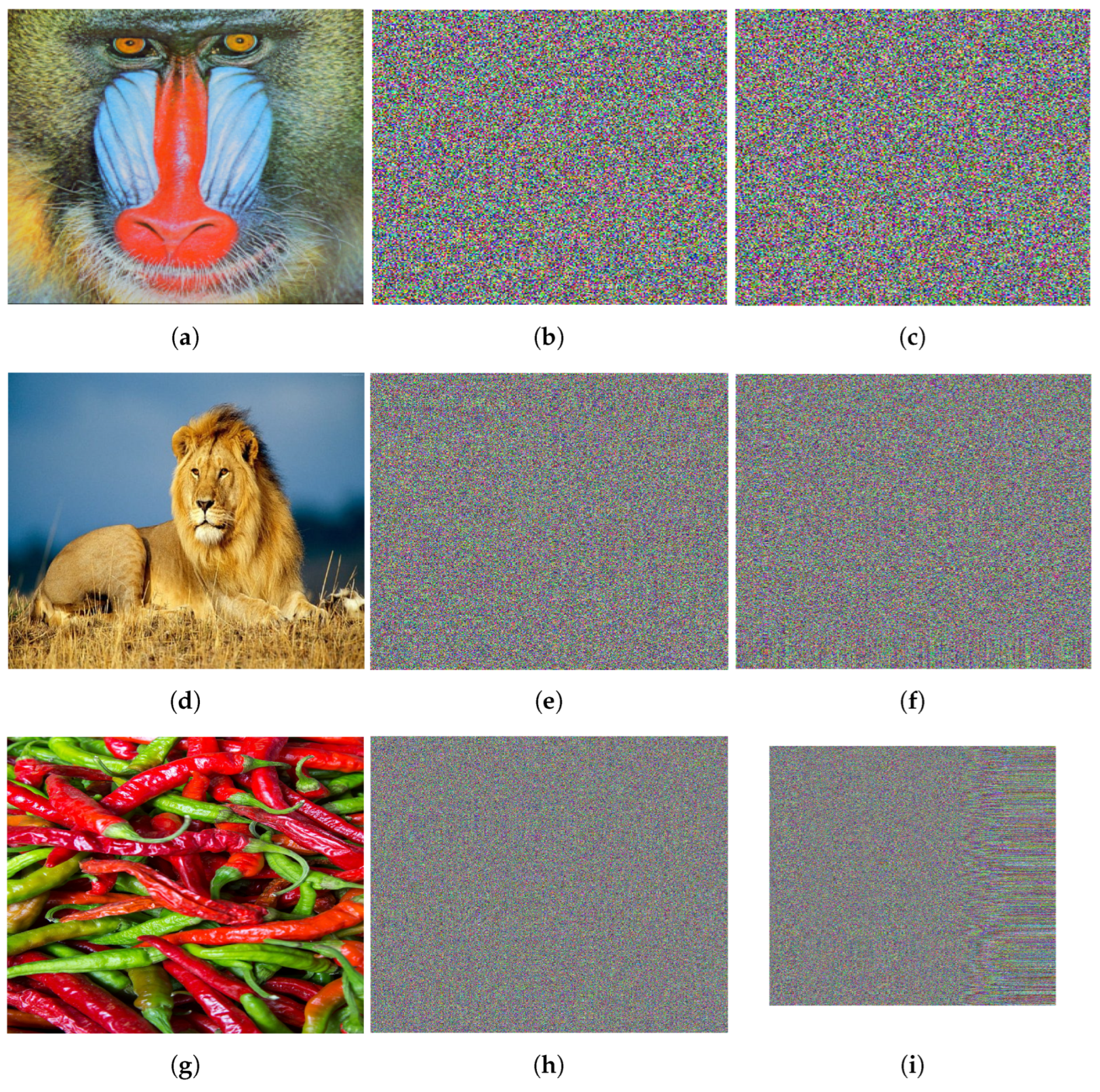
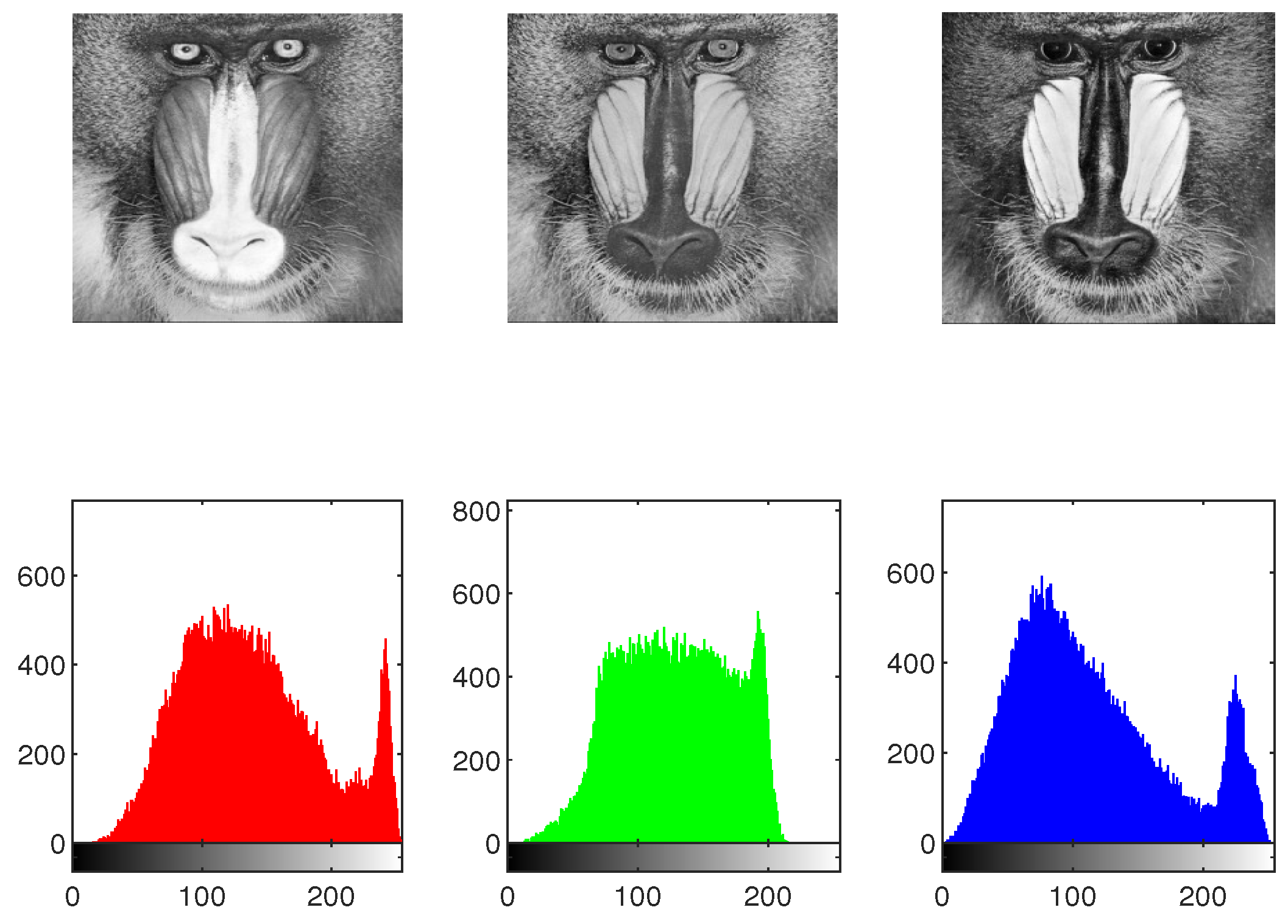
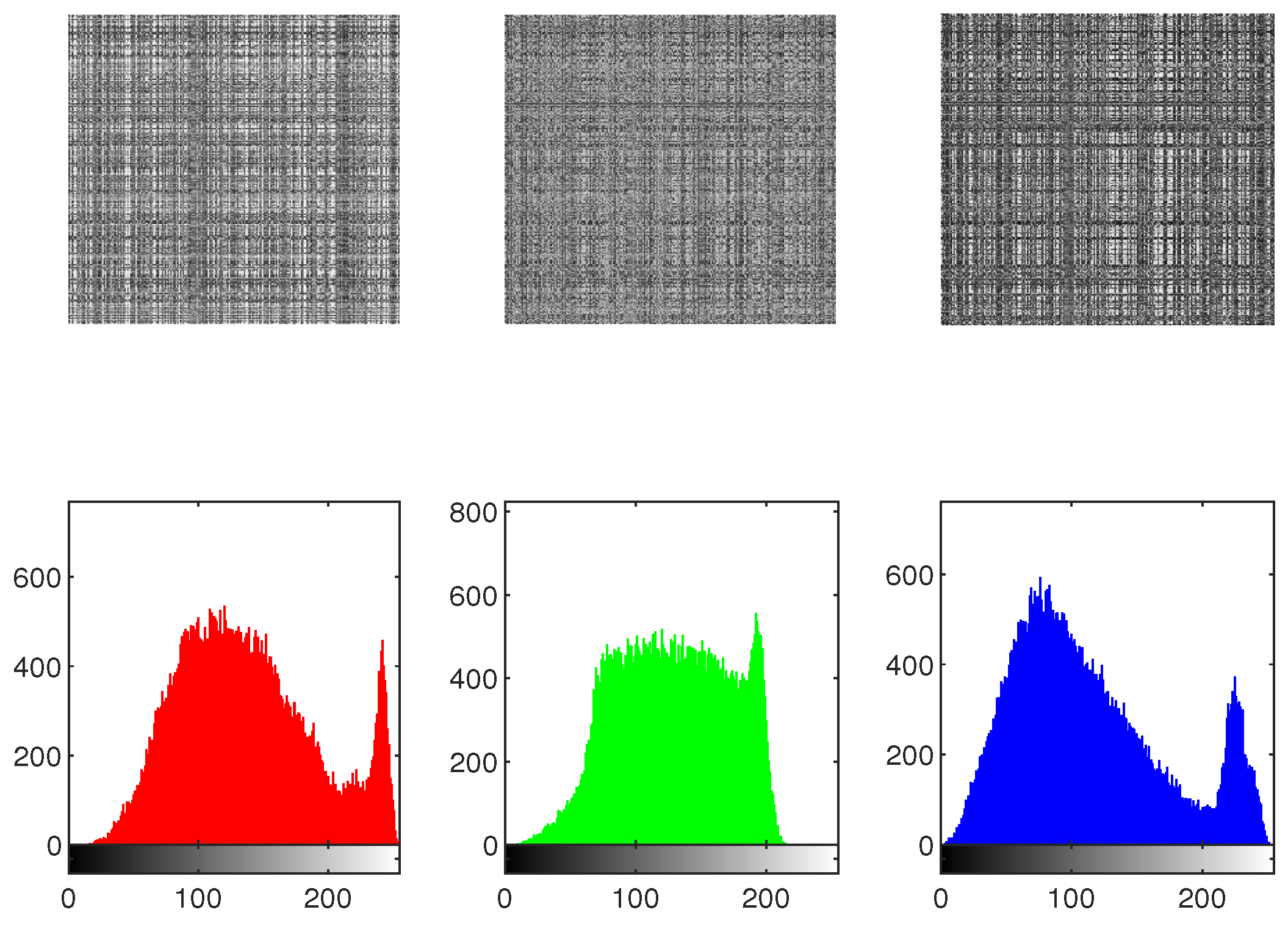
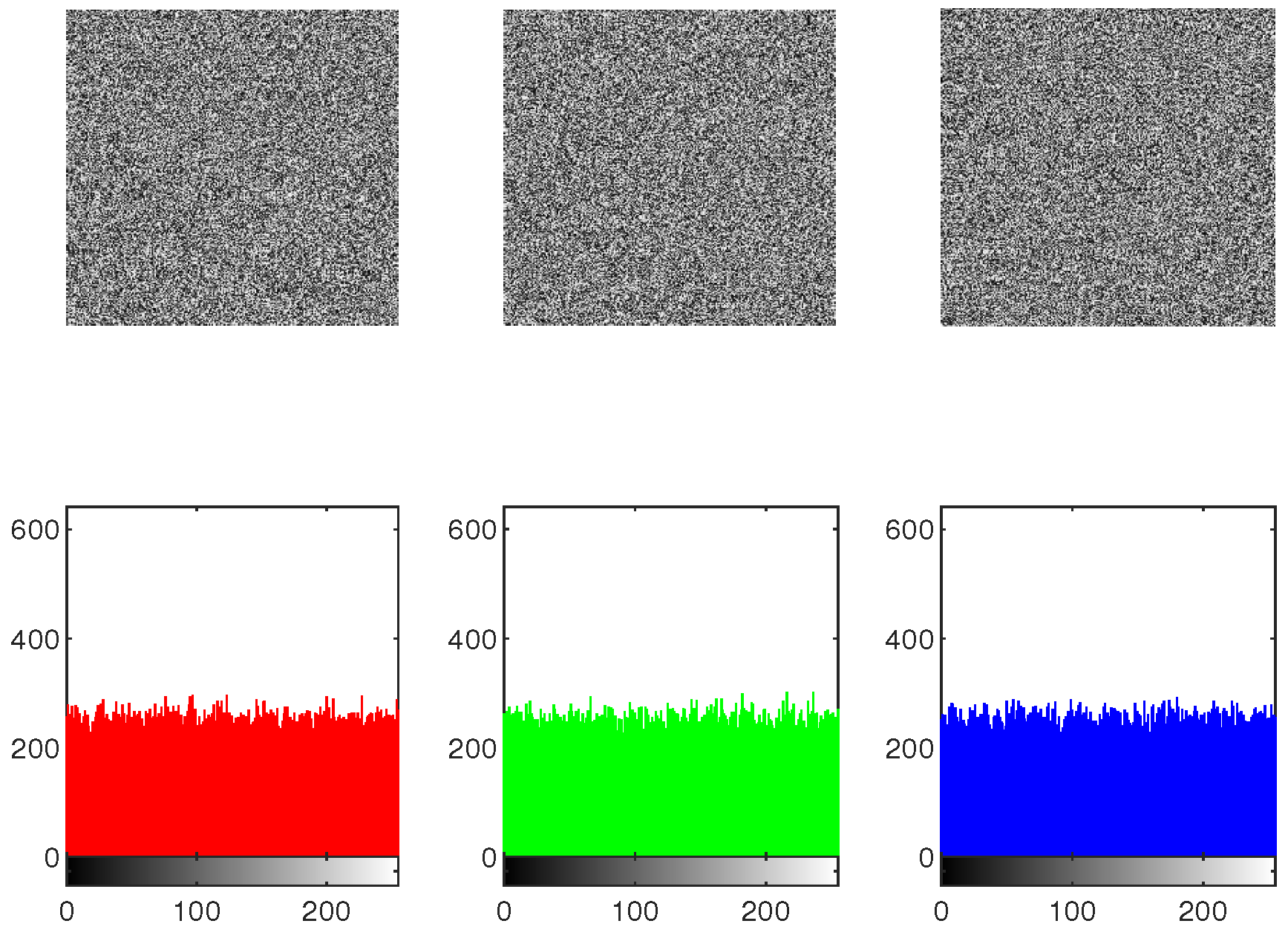
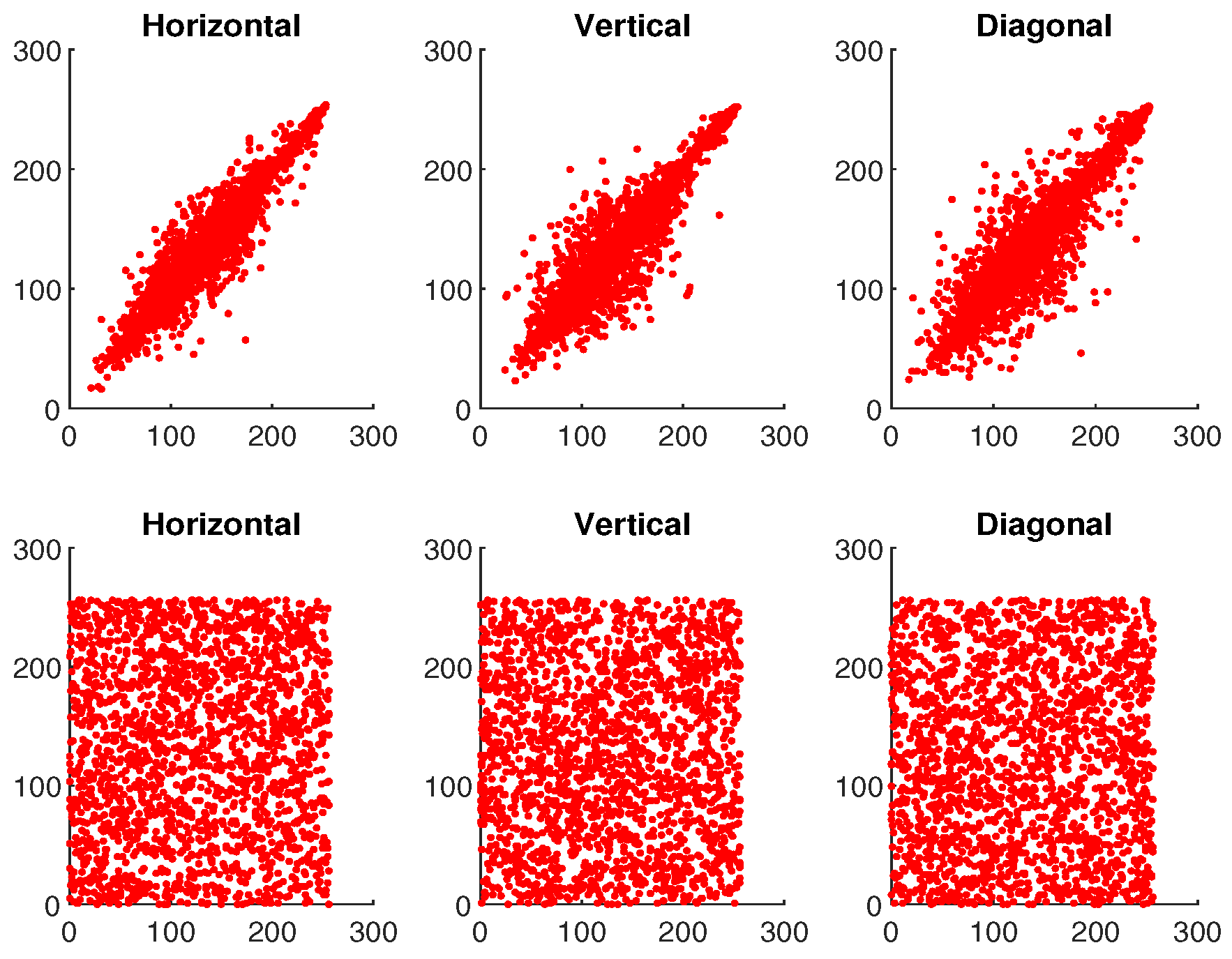
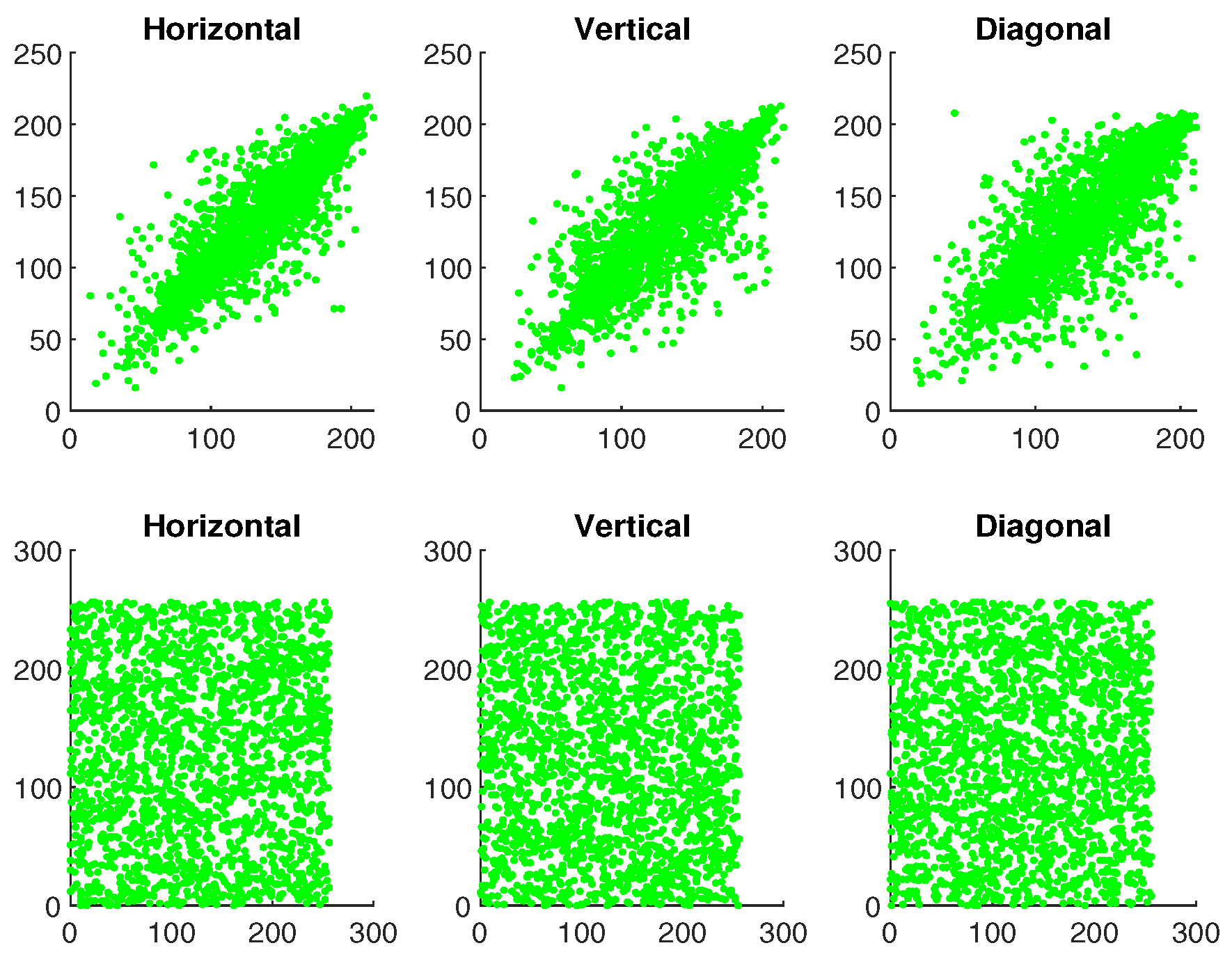
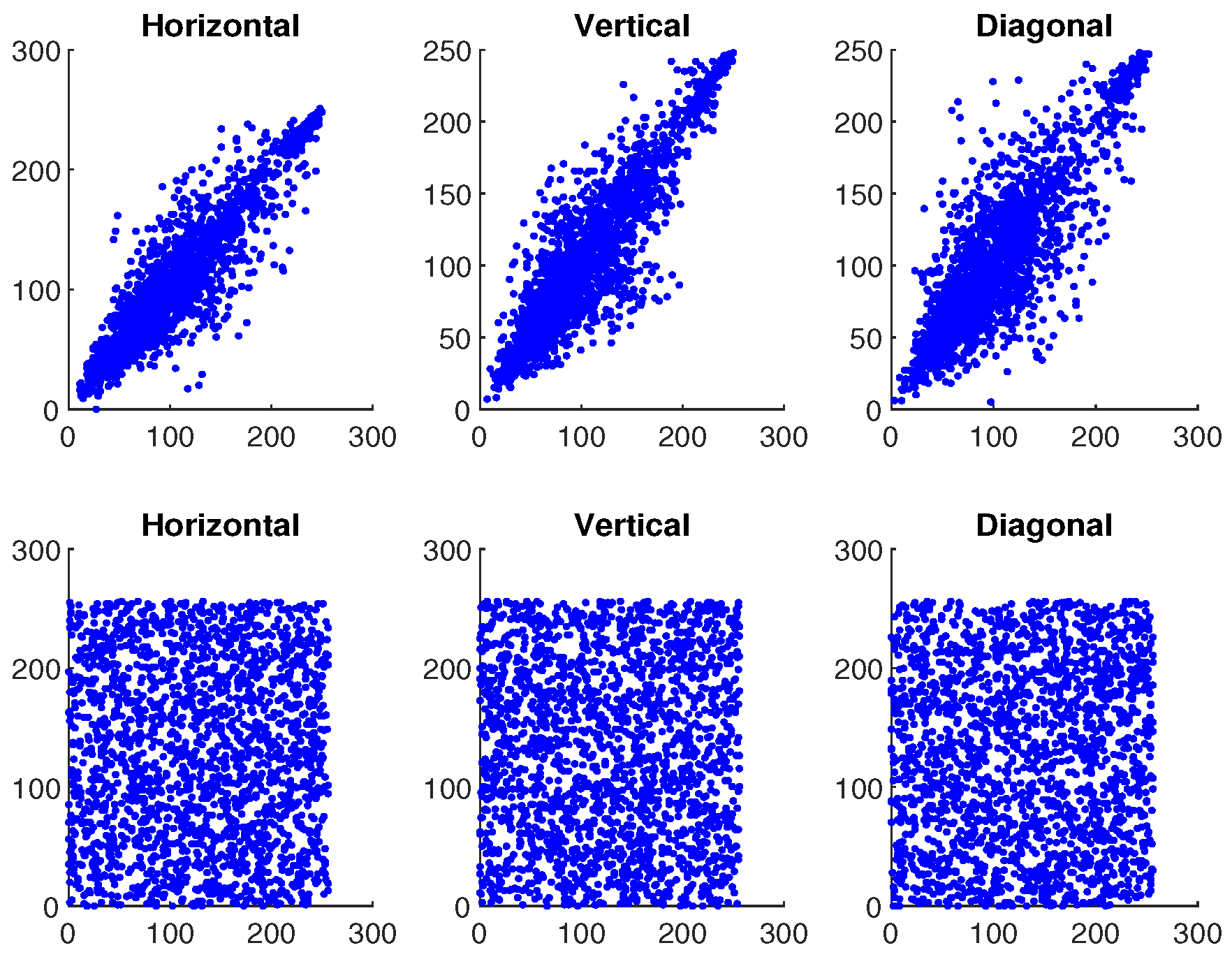
| Plain Image | Cipher Image | ||||||
|---|---|---|---|---|---|---|---|
| Images | Direction | ||||||
| Mandrill | H | 0.9474 | 0.8727 | 0.9215 | 0.0130 | 0.0075 | −0.0114 |
| () | V | 0.9207 | 0.9824 | 0.9138 | 0.0032 | −0.0165 | 0.0014 |
| D | 0.9033 | 0.7924 | 0.8762 | −0.0077 | −0.0015 | 0.0040 | |
| Lion | H | 0.9473 | 0.8693 | 0.9408 | 0.0028 | −0.0008 | 0.0042 |
| () | V | 0.9837 | 0.9598 | 0.9815 | 0.0060 | 0.0103 | 0.0129 |
| D | 0.9399 | 0.8522 | 0.9339 | −0.0012 | 0.0032 | −0.0009 | |
| Peppers | H | 0.9940 | 0.9887 | 0.9729 | 0.0071 | 0.0060 | 0.0012 |
| () | V | 0.9893 | 0.9796 | 0.9532 | 0.0018 | −0.0003 | 0.0068 |
| D | 0.9871 | 0.9737 | 0.9382 | −0.0024 | −0.0006 | 0.0005 | |
| Plain Image | Cipher Image | |||||
|---|---|---|---|---|---|---|
| Images | ||||||
| Mandrill | ||||||
| () | 7.6057 | 7.3580 | 7.6664 | 7.9978 | 7.9979 | 7.9973 |
| Lion | ||||||
| () | 7.7322 | 7.2043 | 7.1717 | 7.9993 | 7.9992 | 7.9991 |
| Peppers | ||||||
| () | 7.9273 | 7.1329 | 5.9750 | 7.9998 | 7.9997 | 7.9997 |
| IE Value | ||||
|---|---|---|---|---|
| Encryption Algorithm | Images | |||
| Mandrill | ||||
| [20] | () | 7.9976 | 7.9972 | 7.9971 |
| Mandrill | ||||
| This article | () | 7.9978 | 7.9979 | 7.9973 |
| NPCR | UACI | |||||
|---|---|---|---|---|---|---|
| Images | ||||||
| Mandrill | ||||||
| () | 99.5986 | 99.5925 | 99.6047 | 33.4527 | 33.4615 | 33.4539 |
| Lion | ||||||
| () | 99.6177 | 99.6105 | 99.5944 | 33.4623 | 33.4449 | 33.4699 |
| Peppers | ||||||
| () | 99.6138 | 99.6121 | 99.6283 | 33.4611 | 33.4551 | 33.4688 |
| Images | Encryption Time (s) |
|---|---|
| Mandrill | |
| () | 0.072019 s |
| Lion | |
| () | 0.236879 s |
| Peppers | |
| () | 0.971330 s |
Disclaimer/Publisher’s Note: The statements, opinions and data contained in all publications are solely those of the individual author(s) and contributor(s) and not of MDPI and/or the editor(s). MDPI and/or the editor(s) disclaim responsibility for any injury to people or property resulting from any ideas, methods, instructions or products referred to in the content. |
© 2024 by the authors. Licensee MDPI, Basel, Switzerland. This article is an open access article distributed under the terms and conditions of the Creative Commons Attribution (CC BY) license (https://creativecommons.org/licenses/by/4.0/).
Share and Cite
Sriraman, R.; Kwon, O. Global Exponential Synchronization of Delayed Quaternion-Valued Neural Networks via Decomposition and Non-Decomposition Methods and Its Application to Image Encryption. Mathematics 2024, 12, 3345. https://doi.org/10.3390/math12213345
Sriraman R, Kwon O. Global Exponential Synchronization of Delayed Quaternion-Valued Neural Networks via Decomposition and Non-Decomposition Methods and Its Application to Image Encryption. Mathematics. 2024; 12(21):3345. https://doi.org/10.3390/math12213345
Chicago/Turabian StyleSriraman, Ramalingam, and Ohmin Kwon. 2024. "Global Exponential Synchronization of Delayed Quaternion-Valued Neural Networks via Decomposition and Non-Decomposition Methods and Its Application to Image Encryption" Mathematics 12, no. 21: 3345. https://doi.org/10.3390/math12213345
APA StyleSriraman, R., & Kwon, O. (2024). Global Exponential Synchronization of Delayed Quaternion-Valued Neural Networks via Decomposition and Non-Decomposition Methods and Its Application to Image Encryption. Mathematics, 12(21), 3345. https://doi.org/10.3390/math12213345







